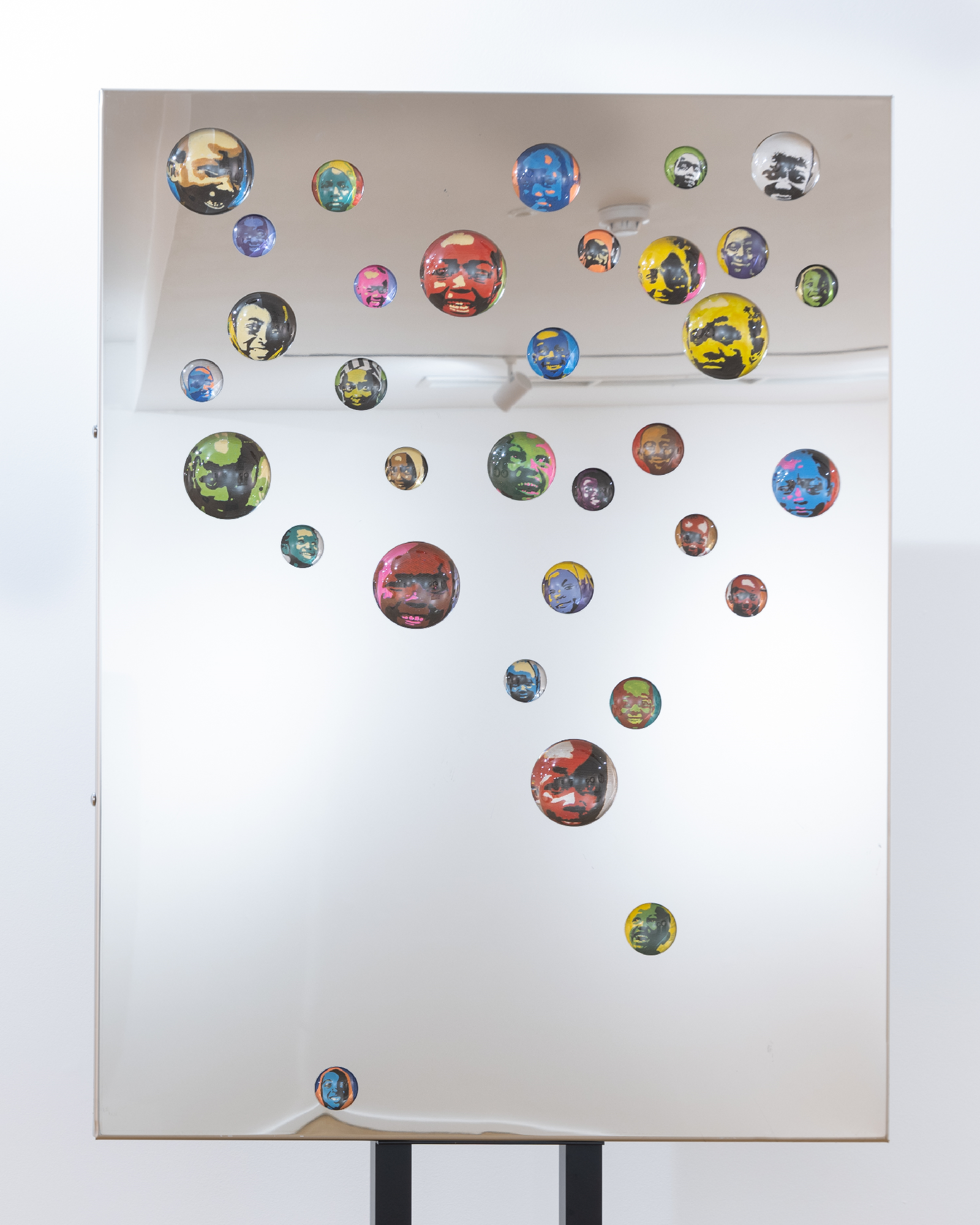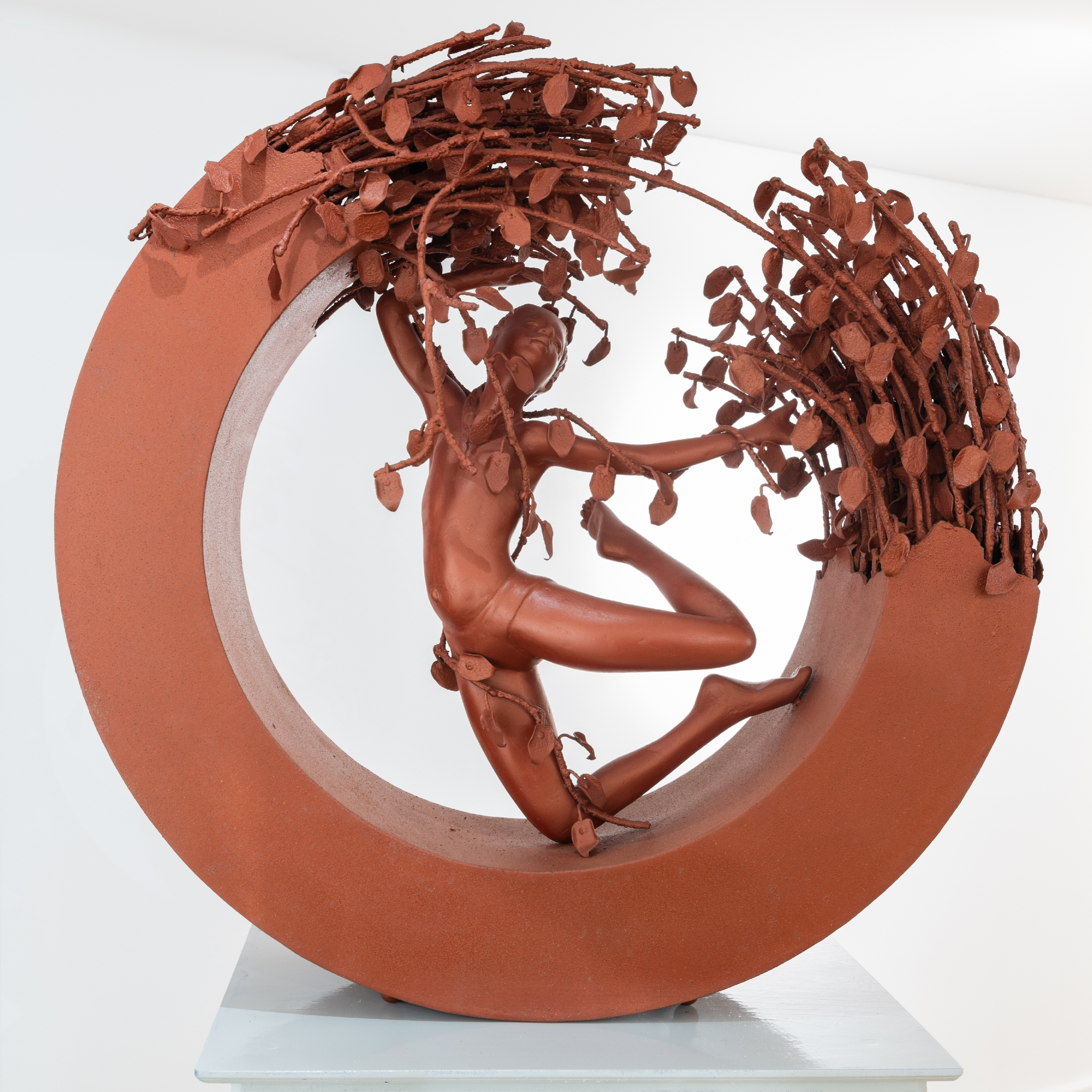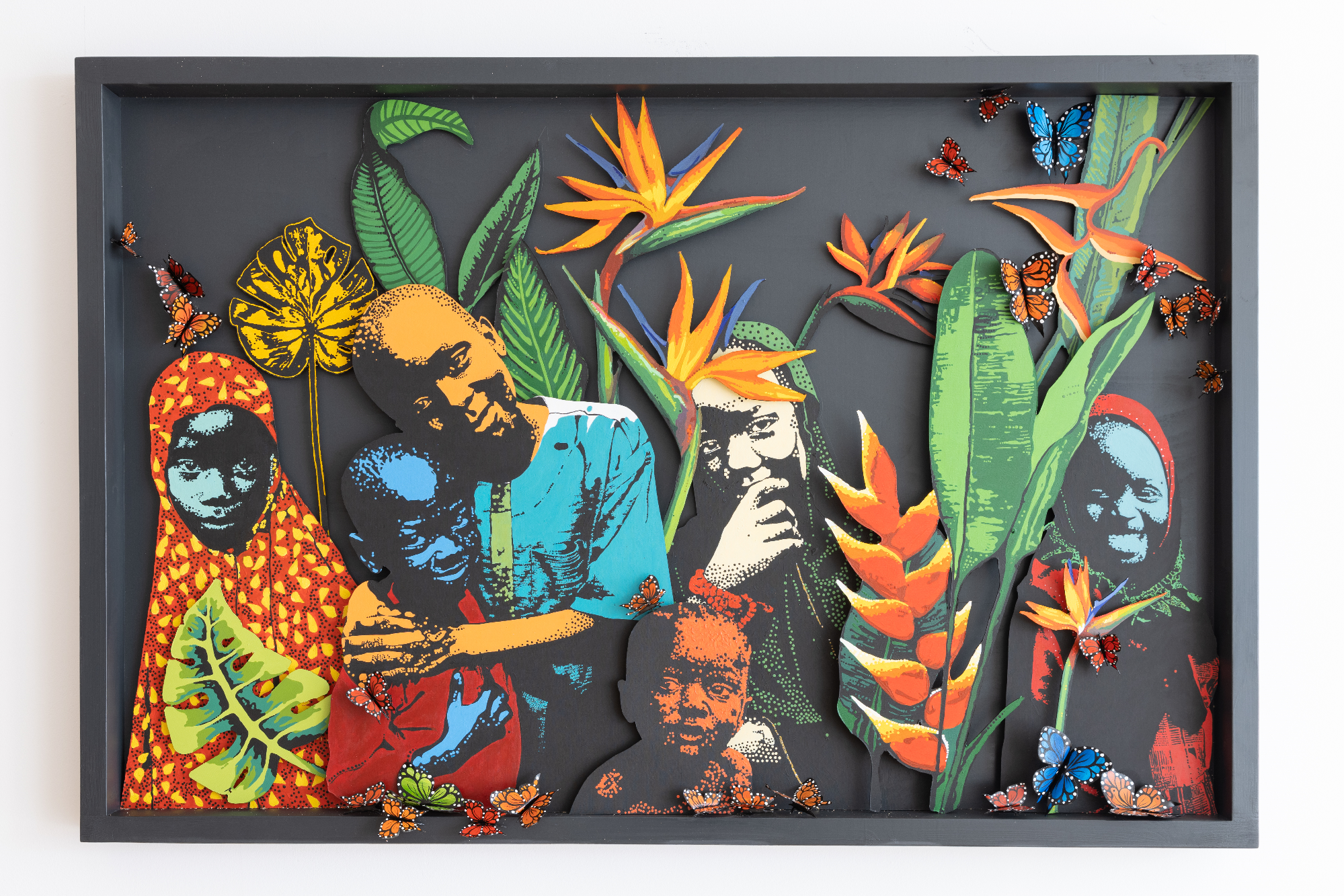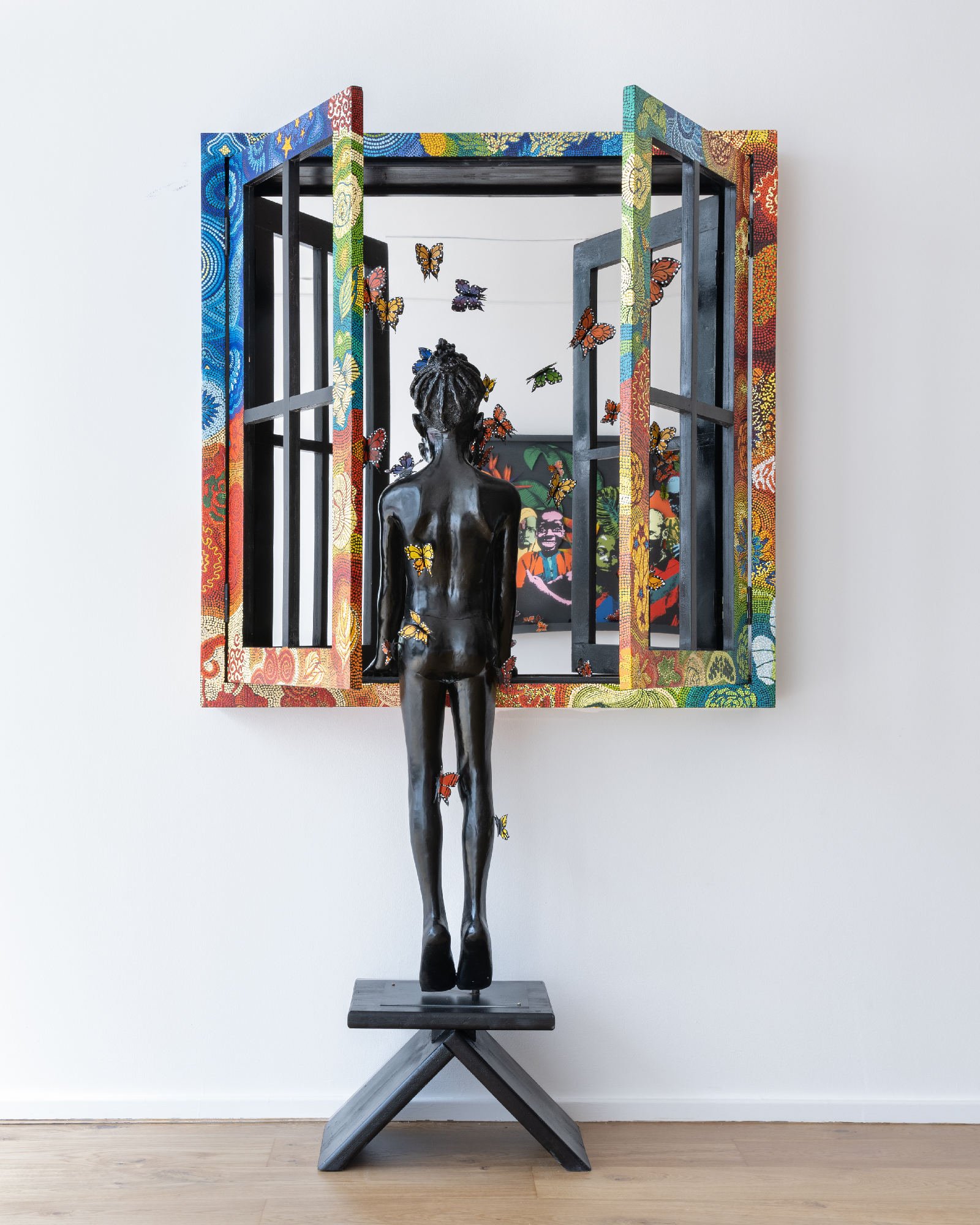Water goddesses, spirit children and raindrops reign at the artist’s Rele Gallery show
Rele Gallery has marked the opening of its new London space with Peju Alatise’s solo show ‘We Came With The Last Rain’. Over a bridge of nine years, the gallery has connected the dots from Lagos to Los Angeles and with this third major location, founder Adenrele Sonariwo hopes Alatise’s exhibition proves the gallery’s commitment to staying “topical and relevant to the times”. The renowned Nigerian artist exercises in multi-disciplinary continuum to address the socio-political complexities of our hierarchical world. Her work expresses a depth that buoys viewers to an alternate sphere of fantasy distilled from West African belief systems that is brought to life through her remarkable mastery of materials. Following her acclaimed sculpture ‘Sim and the Yellow Glass Birds’ at Frieze London 2022, this show continues to champion the innocence of childhood across a series of five sculptures and installations that provoke and inspire.
KA: Can you expand on the title of the show?
PA: This exhibition invites viewers to immerse themselves in the whimsical escapism of Yoruba folklore and mythology with an emphasis on childhood and rain. ‘We Came With The Last Rain’ is a profound artistic endeavour providing a glimpse into a larger collection centred around the empowering tale of the girl-child navigating the challenges of modern-day Lagos as a rented-out servant. This narrative extends to the unfortunate existence of children roaming the streets for survival, commonly known as ‘Almajiri’, who are sent to Islamic boarding schools but end up begging for alms.
KA: Please walk us through the narratives being explored.
PA: I am reflecting on my grandmother’s words in my youth, “Adetoun, this is not the type of rain you play in!” It’s this ‘type of rain’ we observed indoors, watching rain splash against windows, discerning faces in each droplet trickling down the glass. This sentiment is embodied in the installation ‘The Other Side’. Singing my name and Oriki, my grandmother’s special song, “Adetoun Omoba, ma ma yun oko nigba ojo, ma ma fese kan roro”; (Adetoun child of the king, don’t play in the farm when it rains, don’t step in mud). And at the core of this exhibition lies the story of ‘Flying Girls’, a fictional exploration featuring Sim; a nine-year-old girl who is a rented-out servant, and Emiogo, Sim’s dream world best friend. Emiogo mirrors Adetoun Omoba in the artwork ‘I Will Send for You When the Rain’.
“The show centres around the girl-child navigating modern-day Lagos as a rented-out servant”
KA: To recuperate facets of identity, history and cultural narratives, your work ganders at Yoruba cosmology. How has this contributed to shaping your artistic voice?
PA: The borrowed credence from Yoruba folklore revolves around the stories of ‘rain’ and ‘fertility.’ A specific type of rain makes everything grow, with Oya, the rain-associated deity, ensuring fertility. The narratives woven into the artworks resonate with broader themes of resilience, identity and the rich cultural heritage of the Yoruba experience. ‘We Came With The Last Rain’ invites audiences to explore the layered storytelling, culture and creativity defining my artistic practice.
KA: As you continuously plant seeds of hope through child and girl rights activism, briefly share some of the wins and some of the challenges?
PA: 93 of the 270 abducted Chibok girls are still in captivity 11 years since news of the kidnapping made international headlines. It is a bittersweet win because 186 were rescued. The long-standing advocacy for children’s rights, particularly focusing on the girl-child, achieved a significant milestone when the Federal Government of Nigeria took a crucial step in 2015 by formally prohibited the employment of children below the age of 12 as domestic helpers. This ban is enforced with a penalty of a two-year prison term and potential fines for violators. Additionally, the legislation extends to safeguarding domestic helpers under 18 years old, aiming to put an end to the historical and widely acknowledged abuse experienced by this vulnerable group in the country. On the other side, child marriages have not been outlawed to date.
KA: How did you arrive at combining sculpture, painting, collage, architecture and design into your oeuvre?
PA: Quitting my job at an architectural firm after graduation marked the beginning of my journey. I established a studio focusing on three core aspects: design, fine art and writing. From crafting buildings, interior spaces and jewellery to writing books and creating visual art, balancing these diverse elements posed a significant challenge. Each facet had its own approach – skill, materiality and storytelling. Over time, these disciplines naturally converged into a unified modus operandi, resulting in spatial works that foster discourse and expression across various mediums.
KA: ‘We Came With the Last Rain’ anchors a sterling poetic mixed media approach riveted by the compositions, techniques and forms. What one thing does it allot to the next generation?
PA: To the older generation, it reminds us of our responsibilities to those who come after us and to the much younger generation, it gives these children a platform to remain children.
We Came With The Last Rain’ by Peju Alatise is on view at Rele Gallery, 5-7 Dover Street, London, until 23 March.
Words Kwame Aidoo
Portrait photography Matthew Arthur Williams
Visit Peju Alatise
Visit Rele Gallery
Published on 07/03/2024






